 Weird Stuff
Weird Stuff  Weird Stuff
Weird Stuff  Our World
Our World 10 Ways Your Christmas Tree Is More Lit Than You Think
 Movies and TV
Movies and TV The 10 Coolest Stars to Set Sail on The Love Boat
 History
History 10 Things You Didn’t Know About the American National Anthem
 Technology
Technology Top 10 Everyday Tech Buzzwords That Hide a Darker Past
 Humans
Humans 10 Everyday Human Behaviors That Are Actually Survival Instincts
 Animals
Animals 10 Animals That Humiliated and Harmed Historical Leaders
 History
History 10 Most Influential Protests in Modern History
 Creepy
Creepy 10 More Representations of Death from Myth, Legend, and Folktale
 Technology
Technology 10 Scientific Breakthroughs of 2025 That’ll Change Everything
 Weird Stuff
Weird Stuff Ten Bizarre Facts About The Doge Meme
 Our World
Our World 10 Ways Your Christmas Tree Is More Lit Than You Think
 Movies and TV
Movies and TV The 10 Coolest Stars to Set Sail on The Love Boat
Who's Behind Listverse?

Jamie Frater
Head Editor
Jamie founded Listverse due to an insatiable desire to share fascinating, obscure, and bizarre facts. He has been a guest speaker on numerous national radio and television stations and is a five time published author.
More About Us History
History 10 Things You Didn’t Know About the American National Anthem
 Technology
Technology Top 10 Everyday Tech Buzzwords That Hide a Darker Past
 Humans
Humans 10 Everyday Human Behaviors That Are Actually Survival Instincts
 Animals
Animals 10 Animals That Humiliated and Harmed Historical Leaders
 History
History 10 Most Influential Protests in Modern History
 Creepy
Creepy 10 More Representations of Death from Myth, Legend, and Folktale
 Technology
Technology 10 Scientific Breakthroughs of 2025 That’ll Change Everything
10 Dangerous Health Fads And Medical Treatments Used In The Past
Health fads are nothing new, but they are much older than many people think. The ancient Egyptians, for example, practiced strange methods of losing weight and treating illness, much like people did in the 20th century. Whatever the era, people tried whatever was at hand to achieve perfection . . . even if the methods were a bit on the crazy side.
Throughout the years, people have done some crazy things to fix their bodies, and only science and the benefit of hindsight have proven them as dangerous as they really were. Whether someone was trying to lose weight or get rid of a pesky STD, humans have been at this health craze thing for a long time. Here are ten of the craziest things people have done to fix themselves.
10 Mercury To Treat Syphilis
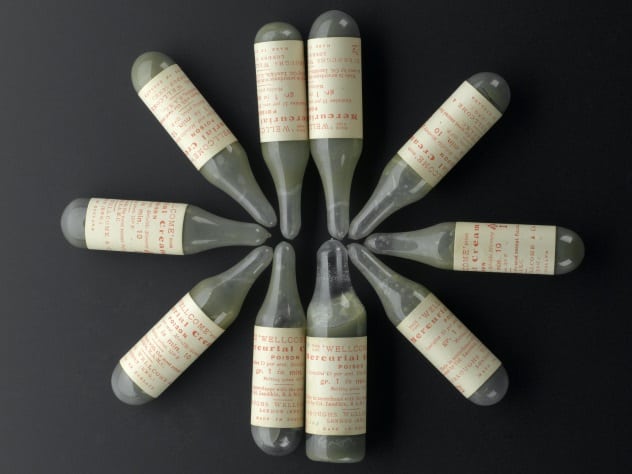
As just about anyone in the world knows, mercury is highly toxic and should never be ingested. We are warned against high levels of mercury in fish, and people are generally wary of the substance. It wasn’t always like that, though, and for centuries, mercury was the go-to treatment to cure syphilis. If you know anything about that disease, it’s not surprising that people would try anything to cure it. Syphilis is a debilitating and horrific ailment that will disfigure and kill a person if left untreated. These days, we use penicillin, but back in the 1300s, quicksilver was on hand to help anyone suffering from the STD.
It was rubbed on the skin, injected, or taken orally, and while it remained a popular treatment until the mid-20th century, it never worked. If anything, it helped to kill the patient faster, which probably alleviated some of the pain associated with the illness, but that’s like cutting off the head to cure the headache. Eventually, it was proven that a compound of mercurous chloride (calomel) did help in treating the disease, but this wasn’t until 1910, and it was still fairly toxic.[1]
9 Lobotomies To Treat Mental Illness
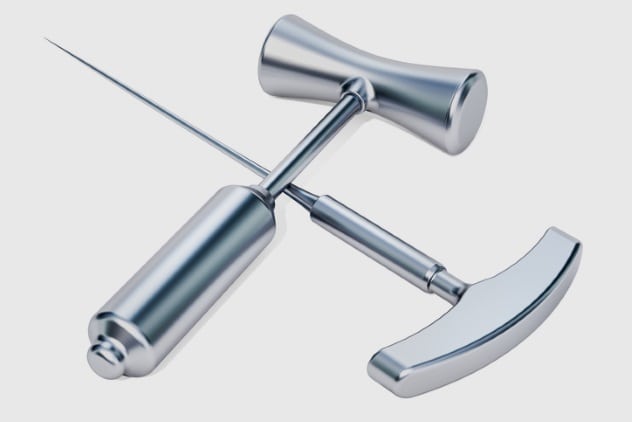
Mental health problems are an area of medicine that has only recently been studied and treated as an illness. As recently as the mid-20th century, we were still locking people up in institutions to “treat” their mental disorders, but this was often just a means of taking people out of society. They would be heavily medicated and receive little to no treatment, and many were tortured with barbaric forms of medicine, including electroshock therapy. Another option for those suffering from serious mental health disorders was something called the “ice pick lobotomy.”
Lobotomies became popular in the United States back in 1936, and by 1949, up to 5,000 of the operations were performed annually on patients as young as four years old. The procedure involves stabbing long metal probes through the eye socket under local anesthesia so that the brain can be literally scrambled by sweeping through the frontal lobe.[2] The damage caused personality changes and effectively killed the patient, though their bodies remained alive. The practice was popular, but by the 1970s, it had become highly criticized and was mostly phased out. Its brutality resulted in long-term brain damage to tens of thousands of patients who could have been treated by other, less invasive means.
8 Arsenic Consumption For Weight Loss
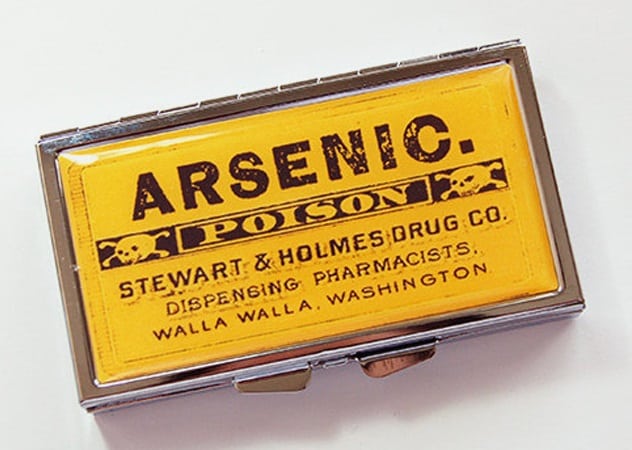
Arsenic is one of those things most people associate with rat poison, but for a time, people happily consumed it in the form of a diet pill. Back in the 1800s, people in Austria began ingesting arsenic in their coffee as a weight loss method. They would put small amounts in their morning cup of Joe and increase it over a period of a few weeks until diarrhea set in. Once their poo began to run, they would slowly decrease the dosage and enjoy the benefits of not being able to keep anything solid in their bodies.[3] Sure, they would lose weight, but they were also poisoning themselves.
The fad spread into pill form and was marketed as a weight loss diet miracle around the world well into the 1920s, but it probably killed people more than anything else. We now know that arsenic doesn’t just make you feel lousy and have to run to the bathroom; it causes your cells to die. It also increases a person’s risk of cancer even in small doses, so it should be avoided at all times.
7 The Last Chance Diet

There are a lot of ridiculous fad diets out there, including the Cookie Diet, the Cabbage Soup Diet, and many others, but few have been as deadly as the aptly named “Last Chance Diet.” Back in 1976, Dr. Robert Linn marketed what he called the Last Chance Diet by insisting that the only way to stay thin and remain healthy was to eat nothing and consume only his magic tonic, Prolinn. The problem with the diet was that it required no exercise, and Prolinn consisted of fewer than 400 calories of energy, which is far too low for any adult.[4]
Prolinn was composed primarily of collagen, which was essentially nothing more than ground-up hooves and the hides of animals killed at a slaughterhouse. The drink was little more than the leavings of animal waste nobody else wanted, but once it was turned into a beverage, Dr. Linn turned it into liquid gold . . . and killed an estimated 30 people. Linn was investigated by the FDA, and his diet is one that absolutely nobody should try.
6 Tapeworms For Weight Loss
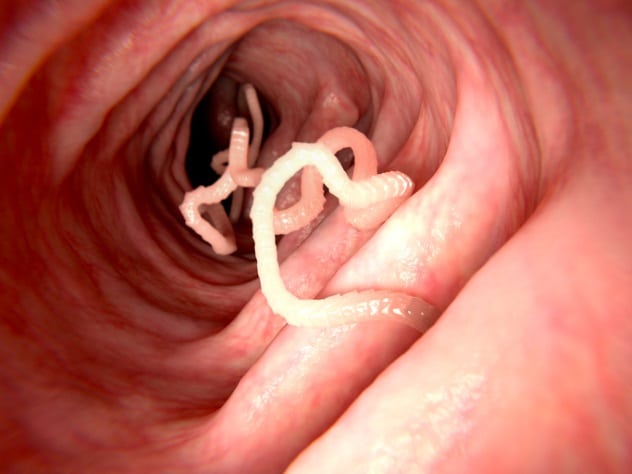
If there’s one thing everyone should know not to do, it’s purposefully ingest a parasite like a tapeworm. Even though common sense dictates that this a bad idea, people have been doing it since Victorian times. The idea is simple: Ingest a capsule containing a tapeworm egg, and once the egg hatches and the worm fully forms, it will feed off the food a person consumes. This enables them to eat whatever they want, and it won’t gain them any weight because the worm will be pulling in all those horrible calories for them. The reality isn’t as neat and tidy, as tapeworms can lead to a plethora of problems for the infected, and they must be removed.
Not only was this diet popular in Victorian England, but it persists to this day. People are still purposefully infecting themselves with tapeworms so that they can lose weight. Fortunately, worms are relatively easy to remove these days, but back in the 19th century, it required a number of dangerous methods. These included swallowing a large metal cylinder (which often choked the patient) to purposefully poisoning oneself to get rid of the worm. Many people died as a result of simply trying to remove the worm, and despite what you may read online, there is never a reason to purposefully infect yourself with a tapeworm![5]
5 LSD To Treat Alcoholism

Alcoholism is one of the most serious diseases, afflicting millions of people every day, so it’s no surprise people turn to unconventional methods to treat it. For a lot of people who either don’t want to or are unable to attend a meeting type of treatment, there is LSD . . . potentially. Back in the 1960s, research was conducted to determine whether or not dropping acid could curb a person’s desire for alcohol. When it was undertaken, the study had mixed results and was abandoned, until recently. Back in 2012, researchers dove back into the collected data and began studying the effects of hallucinogenic medications on treating alcoholism.[6]
The study found it to be effective in 59 percent of participants, so it may not be the most far-fetched treatment option on this list. Granted, the Food and Drug Administration isn’t likely to approve the treatment anytime soon, but there is an alternative on the market called naltrexone, which provided similar results. The dangers of LSD treatment come with the potential side effect of psychedelics that most people are aware of: a bad trip. Improper use of LSD and other drugs like it can lead to complications for people with mental illness and other significant health issues.
4 Tobacco Enema (And Other Crazy Stuff People Have Shoved Up Their Butts)
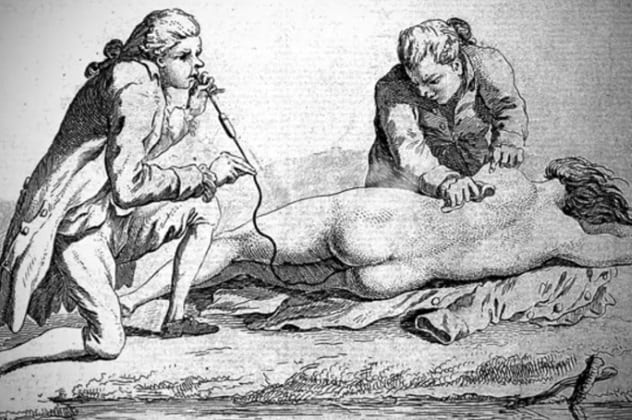
If you’ve ever told someone to go blow smoke up their ass, there’s a chance they could have taken you seriously. The idiom comes from the actual 18th-century practice of blowing smoke up someone’s rectum in the form of a tobacco enema. The practice was developed into a common medical procedure used well into the late 1700s. The main use of the tobacco enema was to treat drowning victims. It was thought that the smoke would encourage a person’s respiratory system to kick into gear while the smoke literally helped to dry the person out. It worked about as often as you might think.[7]
Blowing smoke up there isn’t the only strange enema treatment folks have used over the years. In addition to tobacco smoke, people have regularly gotten coffee enemas. It’s exactly what it sounds like. Another strange enema people seem to enjoy is the oil enema used to treat constipation. The most dangerous enema people have tried would have to be the alcohol enema, otherwise known as “butt-chugging.” This one is particularly dangerous, as anything you shove up your butt will be quickly absorbed into the bloodstream. This can be deadly, seeing as the alcohol doesn’t have the chance to filter through your liver.
3 Bloodletting
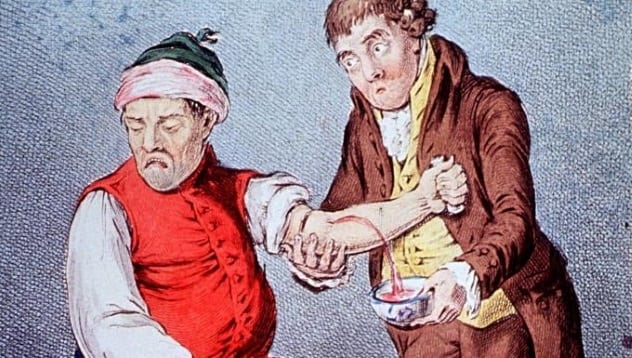
Bloodletting is one of those practices that was common for so long, it’s surprising we survived as a species. Thanks to the benefit of hindsight, we now know the worst thing you could do when sick is to drain your body of blood, but for centuries, that’s exactly what “doctors” did to their patients. The practice revolved around the concept that blood could become corrupted and needed to be removed from the body in order to allow it to heal. It may sound ridiculous to a 21st-century individual, but it made a lot of sense for a span of some 2,000 years.[8]
Interestingly, bloodletting may have been beneficial in some instances. When used to treat hypertension, it makes sense that removing some of the blood would alleviate the symptoms of high blood pressure. In pretty much every other instance, it would weaken and potentially kill a patient through infection. This was especially true in the years before we discovered antibiotics. Infections would arise from the source of the wound, and few would properly recover.
2 Heroin Cough Syrup
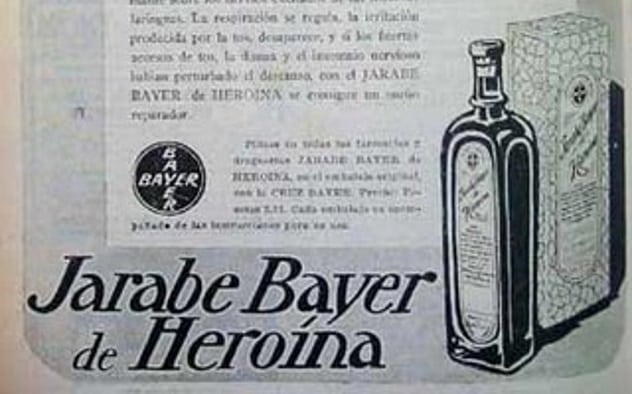
There was once a time when you could go down to your local pharmacy and grab a dose of cough syrup laced with heroin. Sadly, those days are long behind us, but they do paint a picture of how different medical treatments were back in the 19th and early 20th centuries as compared to today. The German pharmaceutical company Bayer promoted a cure for coughing and colds in children back in the late 1890s via a combination of aspirin and heroin. This practice continued until 1912, when years of accumulated data suggested that patients were building up a “tolerance” for heroin, resulting in an increased number of addicts.[9]
You might think it was taken off US shelves at the time, but it continued to be sold in stores until 1914, when it was made available by prescription only. Patients could continue to get it with a doctor’s prescription until 1924, when the FDA put the ban hammer down on the drug. Similarly, cocaine was used as an anesthetic and was famously an ingredient in Coca-Cola for a short time in the 19th century.
1 Radium For Everything
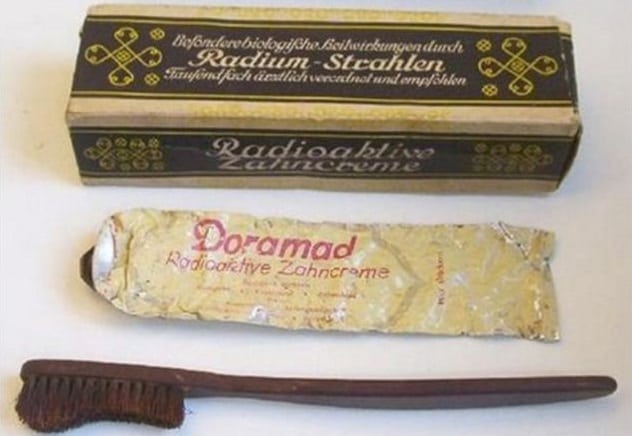
When Marie Curie and her husband Pierre discovered radium, it was one of the biggest finds in the 19th century. Marie later died of asplastic anemia thanks to her lifetime of exposure to the element, but long before her death, radium was considered a miracle substance that companies simply had to include in all of their products. Ironically, it was believed that radium had miraculous health-benefiting properties. Before the effects of radiation on human cells were fully understood, companies put radium in products including toothpaste, chocolate, and water, all meant for consumption. This continued well into the 1930s.
Other uses for radium included placing it in toys and night-lights, thanks to its luminous properties. The substance emits a faint glow, which was used to illuminate dark rooms without electricity. It was also placed into cosmetics that people smeared all over their faces, in heating pads, and in suppositories. Radium was even employed to treat impotence, which it likely only worsened. Radium remained a part of everyday life for years and wasn’t removed from all products until the 1960s, so be careful what you purchase at an antique shop. You never know what might contain radioactive material.[10]
Read about some more crazy health fads on 10 Bizarre Modern Diets You Won’t Believe Exist and Top 10 Craziest Diets Ever.








